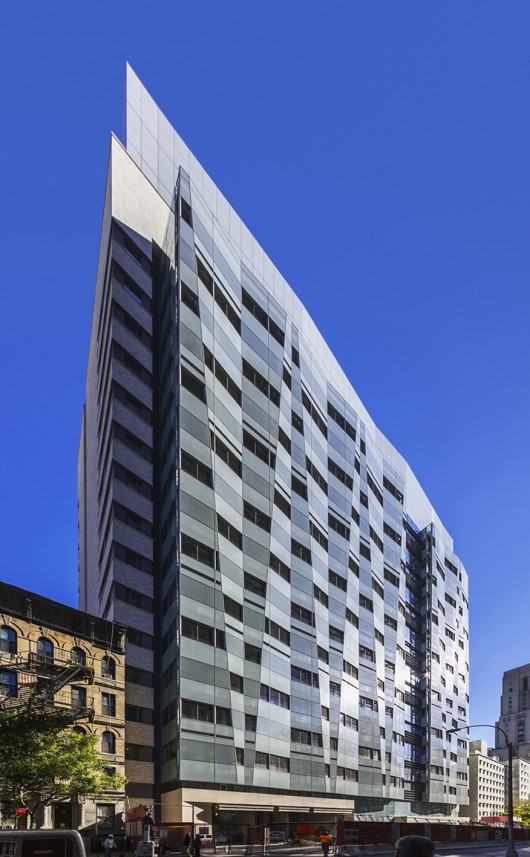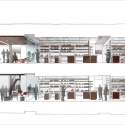
Architects: Todd Schliemann | Ennead Architects
Location: 413 East 69th Street, New York, NY, USA
Architect In Charge: Craig McIlhenny
Project Team: Barrett Brown, Ilya Chistiakov, Margaret Gorman, John Jordan, Zubair Kazi, James Macho, Patricia Salas, Margaret Tyrpa
Area: 480,000 sqft
Year: 2014
Photographs: Jeff Goldberg
Management Partner: Duncan Hazard
Project Manager: Lois Mate
Structural: Severud Associates
Mechanical/Electrical/Plumbing: Jaros Baum & Bolles
Civil/Geotechnical: Langan Engineering and Environmental Services, Inc.
Landscape Architect: Quennell Rothschild & Partners, LLP
Lighting Design: Brandston Partnership Inc
Curtain Wall: Heintges & Associates
Graphics: Two Twelve Associates, Inc.
Acoustics/Audiovisual/ Information Technology: Shen Milsom and Wilke, Inc.
Security: Ducibella Venter & Santore
Code: Hughes Associates
Sustainable Design: Atelier Ten Environmental Designers
Food Service: Romano Gatland
Elevator: Iros Elevator Design Services, Inc.
Environmental: AKRF
Traffic: Sam Schwartz Engineering
Hardware: Glezen Fisher Group
Laboratory Planners: Jacobs Consultancy
Specifications: Robert Schwartz Associates
Digital Media: Squint Opera
Dob Expediting: JAM
Façade Maintenance: Entek
Movable Equipment: Equipment Collaborative
Art Consultant: Vick Art Advisors
Construction Manager: Tishman Construction Corporation

From the architect. The new Belfer Research Building provides Weill Cornell Medical College with a cutting-edge medical research facility in close proximity to the institution’s existing clinical, research and academic buildings, reinforcing its mission as an urban academic biomedical center and world leader in its field.

An outgrowth of Ennead’s 2003 master plan for the campus, the design of the Belfer Research Building is intended to complement the National Healthcare Design Award-winning Weill Greenberg Center, the institution’s flagship ambulatory care facility designed by Schliemann and opened in 2007. A two-story space extends from the Belfer entrance to a landscaped garden that connects the two buildings and creates an internalized campus green for Weill Cornell. Classrooms, conference rooms, lounge and study spaces, and a café are connected to the garden.

A humanistic research environment, the building is designed to facilitate high-impact translational research, providing both state-of-the-art efficiency and optimal quality of life on thirteen floors of laboratories, three floors of academic programs and two floors of research support space. Flexible, transparent, open and easily adaptable spaces are designed to break down research silos and encourage communication and cross-disciplinary collaboration. Natural light is optimized throughout the building as transparency between the office and the laboratory zones allows light from the south to permeate the lab bench area, enhancing the environment within the entire laboratory and allowing visual communication between principal investigators and laboratory researchers. Outside the lab, principal investigators’ offices are located along a common corridor that includes shared collaborative spaces – conference rooms, computational spaces, lounge spaces and break room. A connecting stair linking the office corridor of each floor to an adjacent floor above or below reinforces interdisciplinary interaction.

A digital media wall designed by the London-based firm Squint Opera is part of the building’s sophisticated art program. Visible from the street, it reinforces the transparency of the façade. For both passersby and the scientists and students in the Medical College, the media wall celebrates the spirit of the institution. Both art piece and information resource, the wall consists of over 2,500 high-resolution screens, each behind a lens module, that animate the ground level with a dynamic and innovative installation that conveys information at varying scales and relays the story of the exciting work being accomplished within the building.

The building envelope features a high-performance double-skinned, fritted-glass curtain wall that defines the building’s formal identity and maximizes energy efficiency. The passively vented system is designed to promote controlled convection within the wall cavity, mitigating extreme temperatures on the exterior of the building and significantly reducing temperatures on the interior glass. Openings and sun-shading devices enhance visual and thermal comfort within the office zone, reducing the cooling requirements and the overall carbon footprint of the building in excess of US Green Building Council requirements. Industry standard components and construction methods are used in the curtainwall design to provide an economically sensitive sustainable solution. In addition, the incorporation of energy efficient HVAC, lighting control, and water conservation systems, sustainable materials and green construction technologies will enable the building to save approximately 30 percent on energy consumption and reduce carbon dioxide emissions by approximately 26 percent, in comparison to a building complying with the minimum requirements set by typical industry guidelines and standards. The Belfer Research Building is designed to achieve LEED Gold.



























Weill Cornell Medical College / Todd Schliemann | Ennead Architects originally appeared on ArchDaily, the most visited architecture website on 27 Feb 2014.
send to Twitter | Share on Facebook | What do you think about this?